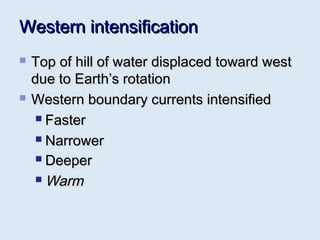The document discusses ocean circulation and currents. It describes how surface ocean currents are driven primarily by wind and transfer heat from warmer to cooler areas, affecting coastal climates. Deep ocean currents are driven by differences in water density from factors like temperature and salinity. Major currents include the Gulf Stream and North Atlantic Drift, which form part of the North Atlantic gyre and transport warm water northward.
































